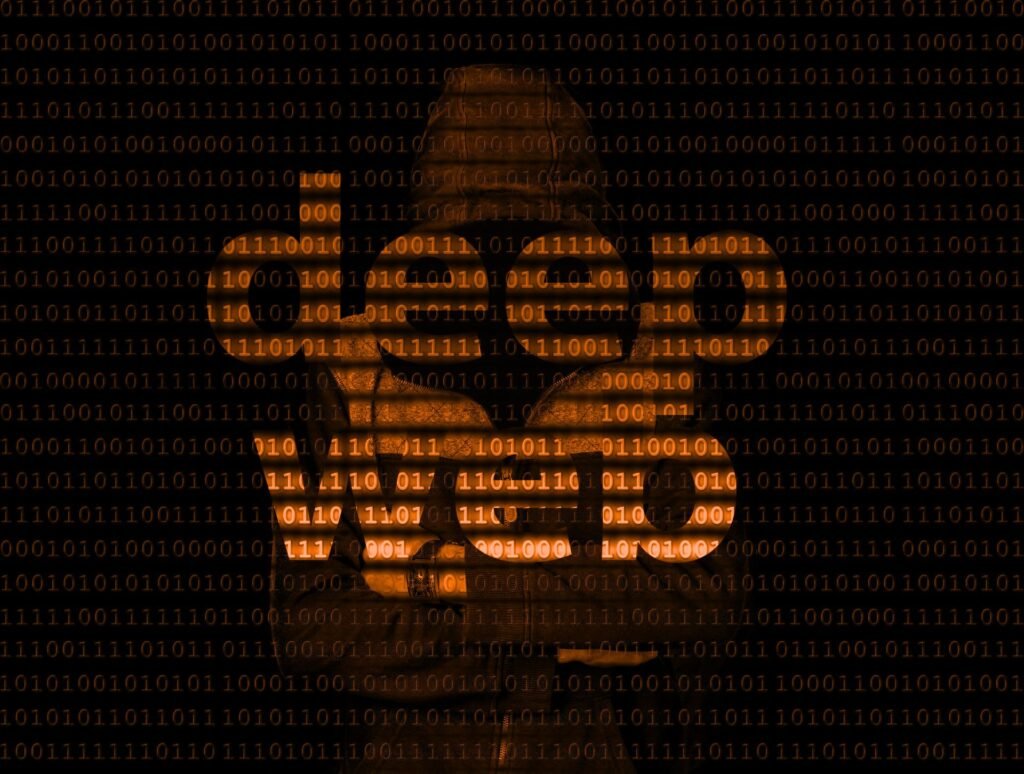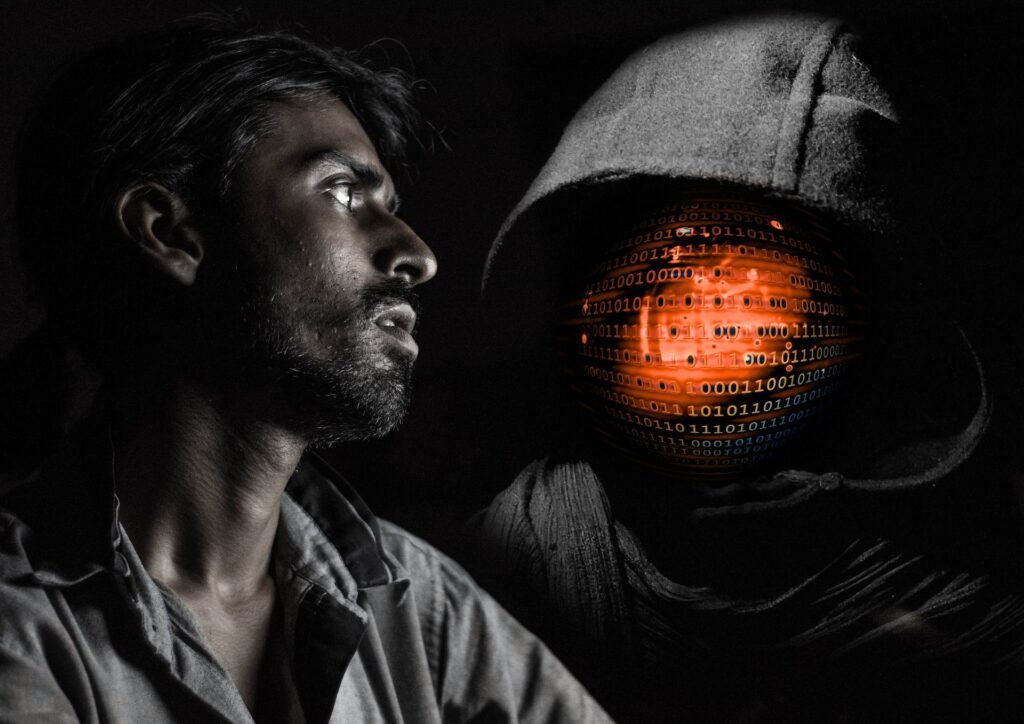Introduction to the Web Layers: Clear Web, Deep Web, and Dark Web
The internet, a vast and multifaceted entity, can be broadly categorized into three primary layers: the Clear Web, the Deep Web, and the Dark Web. Understanding these layers is crucial for comprehending the structure and functionalities of the online world.
The Clear Web, also known as the surface web, is the most familiar to the average user. This layer encompasses all the websites and content that are readily accessible through standard search engines like Google, Bing, and Yahoo. It includes publicly available information such as news articles, social media platforms, and e-commerce sites. Despite its extensive reach, the Clear Web represents only a small fraction of the entire internet, estimated at around 4% to 5%.
Beyond the Clear Web lies the Deep Web, a much larger portion of the internet that is not indexed by traditional search engines. The Deep Web includes a vast array of data that is hidden behind paywalls, login forms, and other access restrictions. Examples of Deep Web content include private databases, academic journals, medical records, and subscription-based services. Although sometimes conflated with the Dark Web, the Deep Web primarily consists of legitimate and often vital information that requires specific permissions to access.
The Dark Web, a subset of the Deep Web, is the most enigmatic and often misunderstood layer of the internet. Accessing the Dark Web necessitates special software, such as Tor (The Onion Router), which ensures anonymity and privacy for its users. While the Dark Web is sometimes linked to illicit activities, including illegal marketplaces and criminal enterprises, it also serves as a haven for whistleblowers, political activists, and individuals seeking privacy from oppressive regimes. The Dark Web’s reputation is a complex mix of its potential for both positive and negative uses.
In this guide, we will delve deeper into the intricate workings of the Dark Web, exploring its unique characteristics, the tools required for access, and the implications of its use in today’s digital landscape.
Understanding Tor, I2P, and Other Dark Web Technologies

The Dark Web, often shrouded in mystery, is accessed through various technologies designed to ensure anonymity and secure communication. The most renowned of these technologies is Tor, short for The Onion Router. Tor operates by routing internet traffic through a series of volunteer-operated servers, known as nodes, each encrypting a layer of data like the layers of an onion. This method ensures that no single point can trace the origin of the traffic, making it exceptionally difficult to track user activity. Tor is instrumental in accessing .onion sites, which are specific to the Dark Web.
Another significant technology in the Dark Web realm is I2P, or the Invisible Internet Project. I2P focuses on establishing a peer-to-peer network that supports anonymous communication. Unlike Tor, which was initially designed with anonymous browsing in mind, I2P excels in providing a platform for hosting services and applications within its own network. Users can create websites, blogs, and forums that remain hidden from the surface web, offering an additional layer of privacy and security.
Beyond Tor and I2P, several other technologies contribute to the Dark Web ecosystem. ZeroNet is one such innovation, utilizing Bitcoin cryptography and the BitTorrent network to create a decentralized web. This technology ensures that websites remain online so long as at least one peer is seeding the site, fostering resilience and resistance to censorship.
Freenet is another key player, emphasizing decentralized, anonymous data storage and retrieval. Freenet users contribute storage space and bandwidth to the network, which is then used to distribute and store encrypted data fragments. This ensures that no single user has a complete copy of any particular file, bolstering security and anonymity.
Lastly, GNUnet offers a robust framework for secure, peer-to-peer networking. Its focus on privacy and censorship resistance aligns with the core principles of the Dark Web. GNUnet supports applications such as file sharing, messaging, and anonymous browsing, all while safeguarding user identities through advanced encryption techniques.
These technologies collectively form the backbone of the Dark Web, each contributing unique features to create a secure, anonymous digital environment. Understanding how these systems operate not only demystifies the Dark Web but also highlights the importance of privacy and security in today’s digital age.
Criminal Services on the Dark Net

The Dark Web, often shrouded in mystery, serves as a haven for an array of illicit services that operate beyond the reach of conventional law enforcement. A notable aspect of these services is drug trafficking, with platforms like the infamous Silk Road pioneering the sale of illegal substances. Despite its shutdown by authorities, similar marketplaces continue to thrive, perpetuating the trade of narcotics with relative anonymity.
Illegal arms sales constitute another significant facet of Dark Web activities. These transactions are facilitated by various vendors who offer a range of weapons, from handguns to more sophisticated firearms. The anonymity afforded by the Dark Web makes it a preferred medium for such dangerous exchanges, posing serious threats to global security.
Counterfeit currency is yet another illicit service prevalent on the Dark Web. Vendors offer fake bills that are often of high quality, making them difficult to distinguish from legitimate currency. This not only fuels criminal enterprises but also undermines economic stability. Additionally, the sale of stolen data, including personal information, credit card details, and login credentials, is rampant. Such data breaches have far-reaching implications, affecting individuals and organizations alike.
Hacking services are widely available, catering to a range of malicious activities. From deploying malware to conducting Distributed Denial of Service (DDoS) attacks, these services are often hired to disrupt businesses, steal information, or sabotage systems. The Dark Web serves as a marketplace where such expertise can be bought and sold with alarming ease.
Marketplaces like AlphaBay, which rose to prominence after Silk Road’s demise, illustrate the scale and diversity of criminal activities facilitated by the Dark Web. These platforms offer a plethora of illegal goods and services, making it evident that the Dark Web is a complex ecosystem that thrives on anonymity and decentralization. The persistence of these marketplaces signifies an ongoing challenge for law enforcement agencies worldwide.
Managing Criminal Forums and Establishing Trust

The Dark Web serves as a breeding ground for various criminal forums where illicit activities are orchestrated. Despite their illegal nature, these forums exhibit a structured and systematic approach to management and trust-building. One key aspect is the use of pseudonyms. Users often adopt pseudonyms to conceal their real identities, ensuring anonymity while facilitating interactions without compromising personal security.
Trust within these forums is further reinforced through reputation systems. These systems allow users to build credibility based on their past transactions and interactions. Positive feedback from other members enhances a user’s standing, while negative feedback can lead to ostracization or even expulsion from the community. This mechanism mirrors traditional review systems, thereby incentivizing ethical behavior, albeit within an illegal context.
Escrow services play a crucial role in managing financial transactions securely. These services act as intermediaries, holding funds until both parties fulfill their obligations. Such an arrangement mitigates the risk of fraud, providing a semblance of security in an otherwise precarious environment. Escrow services are often managed by trusted individuals or entities within the forum, further solidifying the trust framework.
Administrators and moderators are pivotal in maintaining the integrity and security of these forums. They enforce rules, resolve disputes, and ensure compliance with the forum’s guidelines. Their presence deters malicious activities and fosters a controlled environment where members can engage in transactions with a degree of confidence. Prominent forums like AlphaBay and Silk Road have demonstrated sophisticated organizational structures, emphasizing the importance of effective management.
Examples of such forums illustrate their operational methods. AlphaBay, before its shutdown, was known for its stringent verification processes and robust escrow services. Similarly, Silk Road’s reputation system was instrumental in creating a trustworthy marketplace, despite its illegal dealings. These examples underscore the complex dynamics of managing criminal forums on the Dark Web and highlight the intricate balance between anonymity and trust.
Human Intelligence (HUMINT) in the Dark Web
The Dark Web, a hidden part of the internet that requires specific software for access, poses significant challenges for law enforcement and cybersecurity professionals. One of the most effective methods for infiltrating and monitoring activities within this covert network is through Human Intelligence (HUMINT). HUMINT involves the use of human agents to gather crucial information and conduct undercover operations, providing insights that technical surveillance alone cannot achieve.
Law enforcement agencies employ several techniques to leverage HUMINT within the Dark Web. These techniques include the recruitment of insiders, the deployment of undercover agents, and the use of informants. Recruitment of insiders involves convincing individuals who are already part of Dark Web communities to provide information in exchange for leniency or financial incentives. Undercover agents, on the other hand, create and maintain credible online personas to infiltrate criminal networks, gaining trust and accessing restricted forums or marketplaces. Informants, who may be former criminals or individuals with valuable connections, also play a critical role by offering intelligence that can lead to significant breakthroughs in investigations.
One notable case study illustrating the effectiveness of HUMINT in the Dark Web is Operation Onymous. Conducted by Europol and the FBI in 2014, Operation Onymous targeted several Dark Web marketplaces. Undercover agents infiltrated these platforms, posing as buyers and sellers to gather intelligence. Their efforts led to the seizure of over 400 illicit websites and the arrest of numerous individuals involved in illegal activities ranging from drug trafficking to cybercrime.
Another example is the takedown of Silk Road, a notorious Dark Web marketplace. Law enforcement officials employed a combination of HUMINT and technical surveillance to apprehend Ross Ulbricht, the platform’s founder. Undercover agents engaged in transactions on Silk Road, ultimately leading to the identification and arrest of Ulbricht in 2013.
These case studies underscore the critical role of HUMINT in combating Dark Web activities. By integrating human intelligence with advanced technical methods, law enforcement agencies can effectively penetrate and disrupt criminal operations within this elusive part of the internet. As the Dark Web continues to evolve, the importance of HUMINT in ensuring cybersecurity and justice remains paramount.
Monitoring the Deep and Dark Web for Security
The necessity of monitoring the Deep and Dark Web has become increasingly critical in the contemporary digital landscape. Organizations and cybersecurity firms invest significant resources to track emerging threats, identify data breaches, and gather intelligence on cybercriminal activities. This vigilant monitoring is vital for preemptively countering cyber threats and protecting sensitive data.
Several sophisticated tools and techniques are employed to monitor the Deep and Dark Web. One common approach involves the use of automated crawlers and scrapers that scan hidden forums, marketplaces, and communication channels. These tools help in identifying leaked credentials, compromised accounts, and discussions about potential cyberattacks. Additionally, threat intelligence platforms aggregate data from various sources, providing organizations with comprehensive insights into the threat landscape.
Organizations should always rely on specialized cybersecurity firms such as XEye Security that offer comprehensive Deep and Dark Web monitoring services. XEye Security deploy advanced analytics and machine learning algorithms along with Deep web experts to detect anomalies and patterns that may indicate malicious activities. By leveraging these technologies, XEye Security provides timely alerts and actionable intelligence, enabling organizations to respond swiftly to potential threats.
Governmental agencies play a crucial role in monitoring the Deep and Dark Web as well. Agencies such as the Federal Bureau of Investigation (FBI) and Europol collaborate with international partners and private sector experts to dismantle illegal operations and apprehend cybercriminals. Their efforts are instrumental in disrupting underground networks and mitigating large-scale cyber threats.
In conclusion, monitoring the Deep and Dark Web is an indispensable component of modern cybersecurity strategies. Through the use of advanced tools, collaboration with specialized firms, and support from governmental agencies, organizations can enhance their security posture and protect against the ever-evolving cyber threat landscape.
Notable Dark Web Attacks
The Dark Web has been the breeding ground for numerous cyberattacks that have had significant implications for both individuals and organizations alike. One of the most infamous types of attacks originating from the dark web is ransomware. Ransomware attacks involve malicious software that encrypts a victim’s data, rendering it inaccessible until a ransom is paid. The WannaCry ransomware attack of 2017 is a prime example. This attack affected over 200,000 computers across 150 countries, targeting systems running Microsoft Windows. The attackers demanded Bitcoin payments for the decryption keys, causing widespread disruption in various sectors, including healthcare and telecommunications. The response from law enforcement was swift, leading to international cooperation to mitigate the impact and prevent future occurrences.
Another significant type of attack facilitated by the dark web is the distributed denial-of-service (DDoS) attack. These attacks overwhelm a target’s online service, rendering it unusable by flooding it with excessive traffic. A notable case is the 2016 DDoS attack on the DNS provider Dyn, which disrupted major websites such as Twitter, Netflix, and Reddit. This attack leveraged a botnet, a network of compromised devices, to generate the flood of traffic. The aftermath saw increased focus on securing IoT devices, which were frequently exploited in these attacks, and enhancing DDoS mitigation strategies among service providers.
Data breaches are another critical concern linked to the dark web. Hackers often sell stolen data on dark web marketplaces, exposing sensitive information. The 2013 Yahoo data breach stands out as one of the largest, with over 3 billion user accounts compromised. Attackers gained access to names, email addresses, and hashed passwords, leading to severe reputational damage and financial losses for Yahoo. The breach prompted heightened scrutiny of cybersecurity practices and regulatory measures to protect user data.
These examples illustrate the diverse and severe nature of cyberattacks emanating from the dark web. They highlight the need for robust cybersecurity measures, cross-border cooperation, and continuous vigilance to safeguard against such threats.
Conclusion: Navigating the Complexities of the Dark Web
The dark web remains a multifaceted and often misunderstood segment of the internet. Throughout this guide, we have delved into its structure, accessibility, and the myriad of activities that occur within its encrypted layers. One of the primary complexities of the dark web lies in its duality; while it serves as a haven for anonymity and free speech, it also harbors illicit activities that pose significant threats to cybersecurity.
Understanding the dark web requires a nuanced approach. On one hand, it provides a platform for individuals in oppressive regimes to communicate and access information without fear of retribution. On the other hand, it is also a marketplace for illegal goods and services, ranging from drug trafficking to cybercrime. These dichotomies present a formidable challenge for law enforcement and cybersecurity professionals, who must balance the protection of privacy with the imperative of security.
The risks associated with the dark web are substantial. From data breaches and identity theft to the spread of malware, the potential for harm is vast. This underscores the importance of continuous monitoring and robust cybersecurity measures. Awareness and education are crucial tools in mitigating these risks, both for individual users and organizations.
Combating criminal activities on the dark web is an ongoing struggle. The inherent anonymity and the use of cryptocurrencies for transactions make it difficult to trace and apprehend perpetrators. However, advancements in technology and international cooperation are gradually enhancing the ability to tackle these challenges. The role of cybersecurity professionals will continue to evolve, requiring constant vigilance and adaptation to new threats.
As we look to the future, the dark web will undoubtedly continue to impact the landscape of cybersecurity. While it will remain a place of both opportunity and peril, the collective efforts of governments, tech companies, and individuals can help to navigate its complexities. By fostering a deeper understanding and implementing proactive security measures, we can better safeguard against the dangers lurking in the depths of the dark web.




